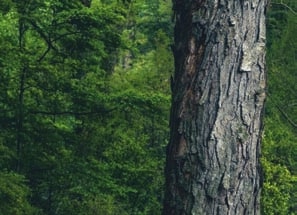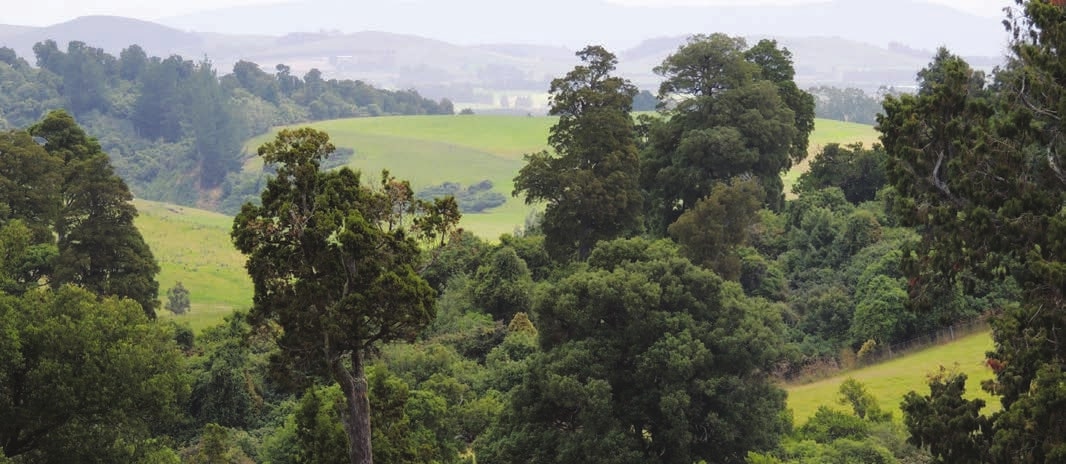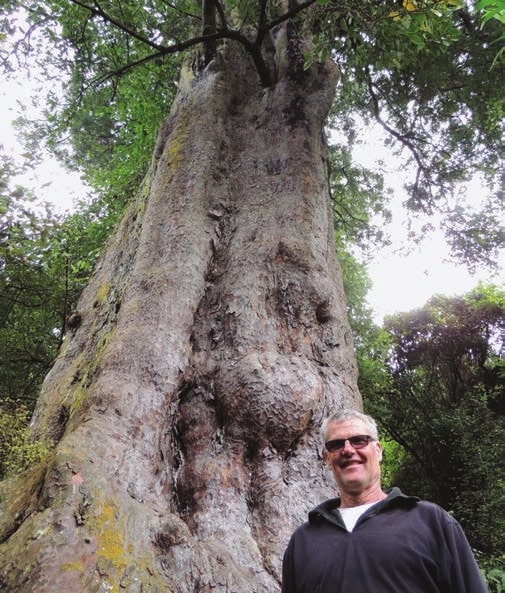QE II National Trust Covenants The what, the why and the how
Jesse Bythell, New Zealand Tree Grower November 2018.
I have carpenters and boat builders on both sides of the family and my interest in trees started from a young age. I never imaged that I would end up working with people who are passionate about protecting trees.
Working for the QE II National Trust brings me into contact with many different people who are not afraid to experiment and who think carefully about how they use the land they own. While my role requires me to advise land owners on how to manage protected areas, I often find our conversations are an equal exchange of ideas and I come away having learned a lot.
The QE II National Trust is a statutory non-government trust which partners with land owners to protect areas with special values for ever. In the simplest sense it means we enable legal protection to be permanently registered on the land title and we stand as ‘perpetual trustees’ to ensure that all future owners are not harming the specified protected areas. Along the way we offer management advice to give the protected areas, often referred to as covenants, a chance to thrive and not simply survive. In the initial set-up phase of a new covenanted area the QE II Trust usually helps with costs such as fencing and surveying the area to be protected.
Diverse protection
Covenanted areas are diverse and they protect native plant communities, scenic values, important geological features and sites of cultural significance A large proportion of covenant areas are forest remnants on farms. The QE II Trust has been working with land owners for 41 years and there are now over 4,425 covenants across New Zealand protecting over 180,000 hectares of private land. Land owners take significant pride in the contribution they have made to protecting our shared natural and cultural heritage.
Despite common misconceptions, land protected by the QE II Trust remains in private ownership and does not belong to the QE II Trust. There is no automatic right of public access unless this is what the land owners specifically allow.
Another misconception is that all covenant areas must be fenced. Fencing is only needed where there is a risk of livestock entering and damaging covenant values. Therefore, for example, covenants adjoining private residences, public reserves or orchards may not require fencing.


Unique deeds
Each covenant area is governed by a deed which is unique to that covenant. I cannot outline every scenario where farm forestry and covenanting intersect, but it is worthwhile mentioning a few typical examples. One common option is to include a small stand of exotic trees inside the covenanted area. This usually happens because the stand is small and the land owner intends to let the area revert to native vegetation once the trees are harvested.
In other situations, exotic tree blocks are fenced in with the protected indigenous vegetation but the legal protection does not cover the exotic trees. The position of the fence and the position of the legal protection are not in complete alignment. This means the fences can be placed in practical positions and the covenant deed does not determine how the exotic trees are managed. Working out pragmatic solutions to allow values to be protected while working with practical land management needs is a priority for the QE II Trust.
Graham Milligan
Registering covenants on their land is a natural choice for those who like to plant trees and are interested in broader aspects of sustainable land use and biodiversity protection. Some of you may be familiar with Graham Milligan from Dipton, Southland. Graham and his wife Heather own two areas registered as covenants which protect two different forest types. One is a 10-hectare mature podocarp and silver beech forest with significant populations of scarlet mistletoe. The other is a 33-hectare tall manuka and broadleaf forest which supports a range of regionally uncommon and threatened plants.
In his typical no-nonsense way, Graham says that protecting areas with covenants is a ‘no-brainer’ and anyone interested in planting trees is playing the long game and thinking of the future. Two key threats to the Milligans’ covenanted forests are possums, which delight in eating mistletoe, and pigs which root up the regenerating manuka forest. Possum control is regularly undertaken, and Graham has some trustworthy hunters who help him to suppress the pig population.

A serious role
Michael Anderson has been planting trees for over 45 years and runs a sheep farm near Hokonui, Southland. Michael and his wife Michelle have protected 36 hectares of lowland podocarp and broadleaf forest on their farm in five separate blocks. Michael admits he was always interested in protecting his forest remnants but getting assistance from the QE II Trust towards fencing costs helped him act sooner.
One covenant area on the Anderson property includes blocks of Douglas-fr, some of which has been harvested. Michael is keen to see the harvest site revert to native forest and has planted some trees to speed this process up. However, high deer levels in the surrounding area have recently frustrated his efforts.
The QE II Trust takes its role to help people achieve legal protection very seriously and wants to acknowledge all the land owners past and present who have taken the steps to ensure everlasting protection of their taonga. If you are considering protecting areas of special value on your property, please contact your local QE II regional representative or to find out more visit our website www.QE II.org.nz
Jesse Bythell is the QE II National Trust regional representative for Southland.

 Farm Forestry New Zealand
Farm Forestry New Zealand